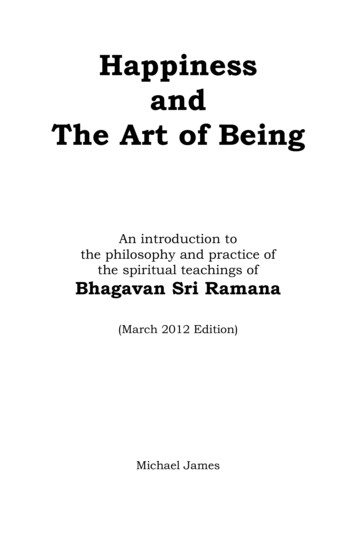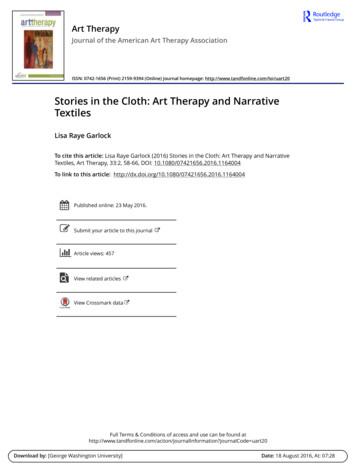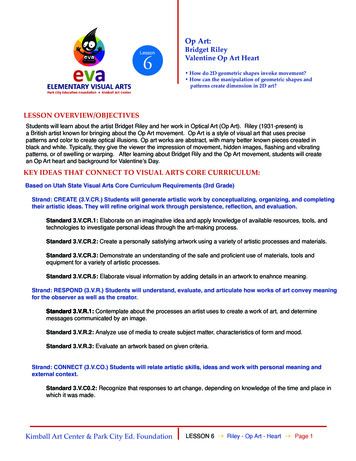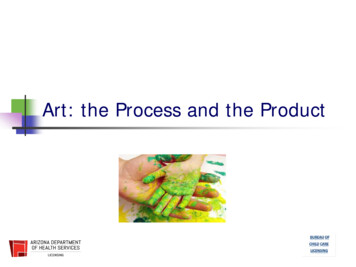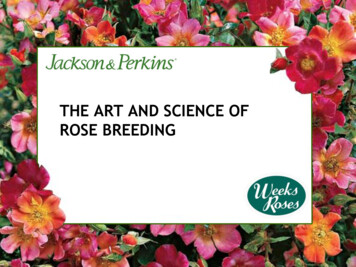
Transcription
THE ART AND SCIENCE OFROSE BREEDING
Agenda Introductions Six-Step Rose Breeding Overview The Perfect Example Tom’s Favorites The Not-So-Perfect Example Keith’s Favorites Biotechnology & the Blue Rose The Future of Rose Breeding
Introducing: The Godfathers of Rose BreedingTom Carruth and Keith Zary
Six-Step Rose Breeding Overview Step 1:Step 2:Step 3:Step 4:Step 5:Step 6:Set breeding objectivesParental selectionHybridizing process (April-June, December)Progeny selection (4-6 years)Global trialing (2 years)Build-up and commercial introduction
Step 1: Set Breeding ObjectivesShared Breeding Objectives Disease resistanceOverall garden performanceAttractive growth habitNew colorsNew fragrancesTom’s ‘Fourth of July’Keith’s ‘Diana, Princess of Wales’Tom gives specialfocus to gardenbeauty, attractiveaging color, andrapid repeatblooming climbers.Keith concentratesheavily on own-rootvigor, powerfulfragrances, andstrong hybrid teaswith high-centeredbloom form.
Step 2: Parental SelectionWeeks/J&P Breeding Programs Each program has about 2-300 parentsAbout half are proprietaryBoth programs located in So CalImportant to select parents that will helpreach breeding objectives‘Baby Love’‘Beloved’Tom’s Top Parents Voodoo City of San Francisco Baby Love Santa Claus Unnamed yellow R.soulieana derivative fromHerb Swim’s workKeith’s Top Parents Beloved Gemini Snowcone Unnamed red arching SHseedling from Footloose Unnamed fragrant yelloworange blend floribundaseedling from Mirabella
Step 3: Hybridizing Process Conduct pollinations (April to June)Harvest and clean seed (August to September)Stratify seed (70 to 90 days at 2 C)Plant seed (December)Conducting pollinationsHarvesting seed – by hand and by blenderPlanting seed
Step 4: Progeny Selection First year selection in seedlinggreenhouse All subsequent selectionsconducted in Wasco fields Trialed for at least 6 years Selection criteria Disease resistanceVigor and plant habitBeauty of flowerFloriferousnessFragranceCold hardiness
Step 5: International TrialingAll-America Rose Selections (AARS) Established in 1938 in response to Plant Patent Act 20-25 test gardens across the country Rigorous two-year, unbiased trial AARS winners considered the best roses in the countryHot Cocoa2003 AARS winnerGemini2000 AARS winner
Step 5: International Italy
The Perfect ExampleBreeding ObjectivesParental SelectionProgeny SelectionVigorous climberFast repeat bloomNovel colorationsDisease resistanceLarge sprays of flowersNationwide performanceRoller CoasterFourth of July1999 AARS winnerAltissimo
Tom’s Favorite Rose CreationsEbb TideFourth of JulyJulia ChildHome RunMoonstone
The Not-So-Perfect ExampleBreeding ObjectivesParental SelectionProgeny SelectionSoft pink hybrid teaColor blendPowerful fragranceSuper clean foliageOwn-root vigorHigh-centered bloomsSecretPope John Paul IIFragrant Lace
Keith’s Favorite Rose CreationsSnowconeBelovedGeminiTahitian SunsetTuscan Sun
The Mysterious Blue Rose
Biosynthetic Pathway of PigmentsFlavonoid 3’, 5’hydroxylaseFlavonoid OOHOHOHOH OHO OHOOHcyanidin OHOOHOHOHOHPelargonidinThe pathway of rosesOHOHOHdelphinidinblue pigment
Roses are Red, Violets are BlueLavandeMadam VioletAOZORA (Bluesky)Seiryu(Blue Dragon)
Generation ofBlue RosesInduction of callusfrom leavesF3’5’H geneObtaining a F3’5’H gene fromblue flowersTransformed cellIntroduction of a F3’5’H geneand selectionFloweringCultivation in glasshouseRegeneration
Pigment Analysis vs. Mauve RosesOur blue roseLavandeA Mauve roseMadam VioletBlue delphinidinBlue MoonRed cyanidinSeiryu0.000.020.040.060.080.100.12(mg/g petal)
In the End, Roses ARE Blue!(Well, sort of )HostTransgenic
TO INFINITY AND BEYOND!The Future of Rose Breeding
Compact Plant with Big Blooms
New Colors
Really Big Tree Roses
Shade-Loving Roses
Drought Tolerant Roses
Water-Loving Roses
Really Cold Hardy Roses!
New Fragrances
Rainbow Roses?
ANY QUESTIONS?
THE ART AND SCIENCE OF ROSE BREEDING Introductions Six-Step Rose Breeding Overview The Perfect Example Tom's Favorites . (Blue Dragon) Roses are Red, Violets are Blue. F3'5'H gene Obtaining a F3'5'H gene from blue flowers Generation of Blue Roses



